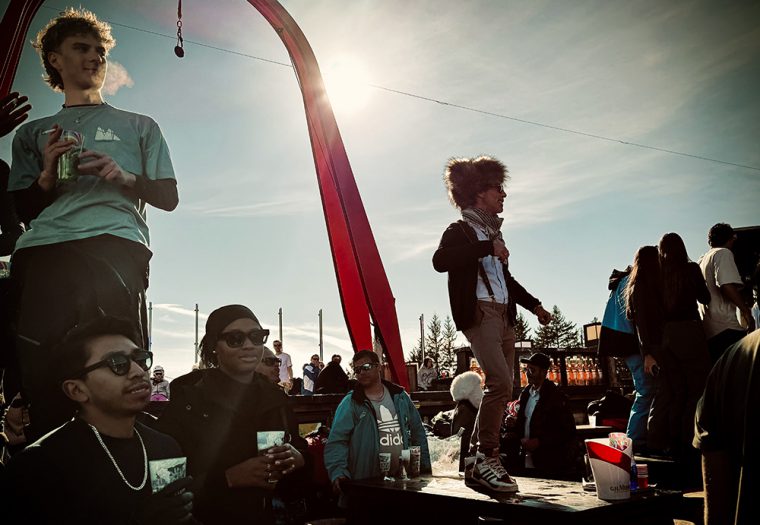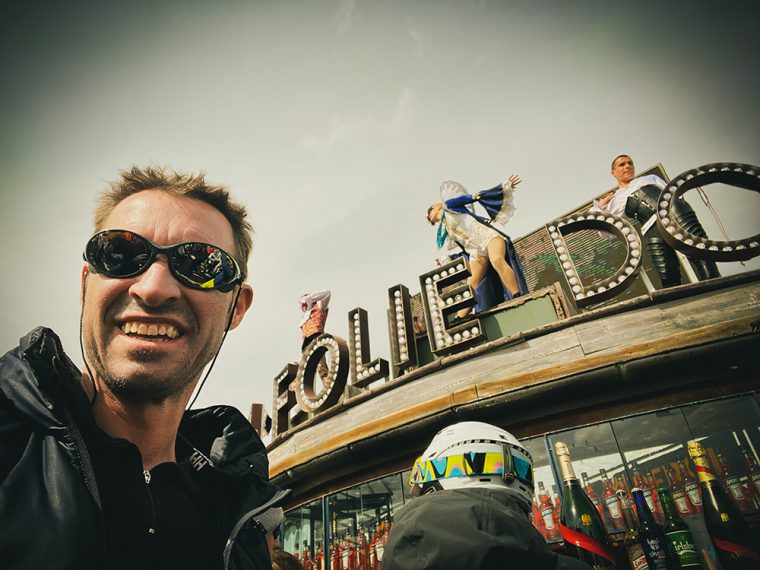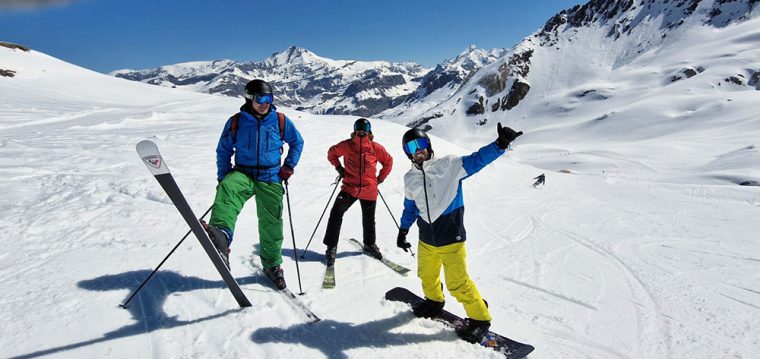The Ultimate Beginner Skier’s Guide to Les Arcs
Greg from SNO explains why Les Arcs is so good for beginners learning to ski:
I’ll be honest – when you first arrive in a top-tier ski resort like Les Arcs and see the sheer scale of the place, it’s a bit overwhelming. Four villages scattered across a mountain face, 425km of pistes disappearing into the distance. My first thought when I came all those years ago was “have I made a terrible mistake?”
But after loving it myself and subsequently hearing from so many clients who’ve learn here over the years, I’m convinced it’s one of the best places in the Alps to find your ski legs. And that’s not just resort PR speak.
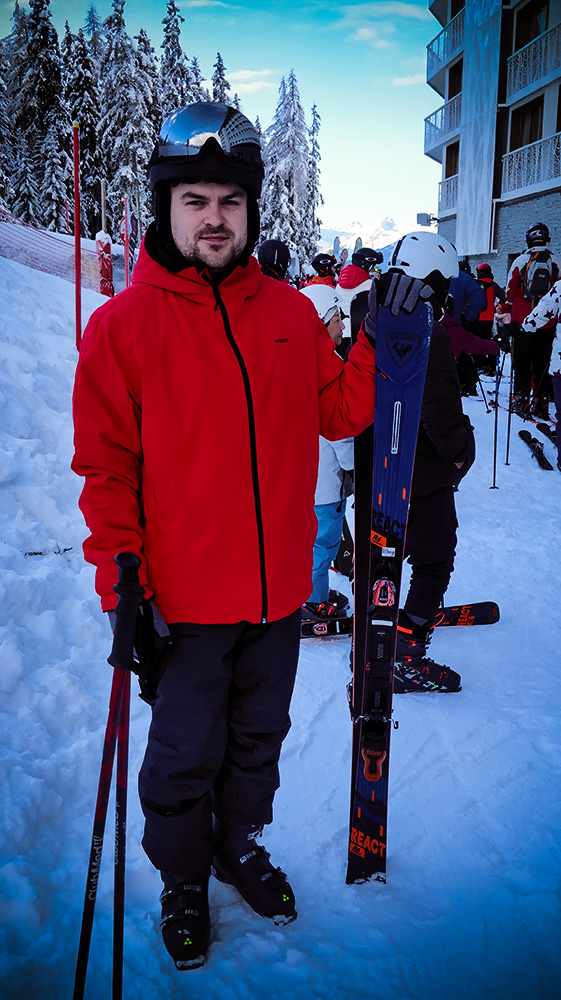
The biggest thing that blew me away is that they’ve got 11 lifts you can use without buying a pass. Eleven! My mate’s sister spent her first three days just pottering about on these, getting comfortable before committing to a full pass. She saved herself over a hundred pounds and all the pressure that comes with feeling you need to “get your money’s worth.”
Then there’s Mille8 at Arc 1800. When they spent €36 million on a beginner area, some thought they’d lost the plot. But seeing pics of a client’s kids discover skiing there last winter changed my mind completely. Where else can you ski until half seven in the evening, play a giant xylophone with your ski poles, and even go for a swim? It transforms those first wobbly days into something genuinely fun.
The altitude helps enormously too. Starting at 1,600m and going up to 2,120m means proper snow from December through to late April. I’ve seen too many beginners struggling on icy morning slopes in lower resorts – it’s miserable and knocks confidence. Here, you get consistent, forgiving snow that makes learning so much easier.
And because Les Arcs was purpose-built in the 60s and 70s (rather than growing organically from an old farming village), everything just… works. No hobbling through medieval streets in ski boots. No getting lost trying to find the lift. It’s logical, which matters when you’re already dealing with the nerves of strapping planks to your feet.
The 421+ ESF instructors here really get British beginners. They understand we need encouragement rather than that Gallic shrug when we’re face-planting for the tenth time. Most speak decent English and know when to suggest a coffee break before we have a complete meltdown.
Each village has its own personality and learning environment. Arc 1800 with Mille8 is brilliant for complete beginners. Arc 2000’s high bowl is perfect when you want space to practice. The tree runs down to Peisey-Vallandry are where you’ll build real confidence in your second week.
One thing worth knowing – more than one person thought the blue runs here are slightly steeper than places like La Plagne next door. But I didn’t think so – maybe it’s like the difference between learning to drive in Milton Keynes or London?
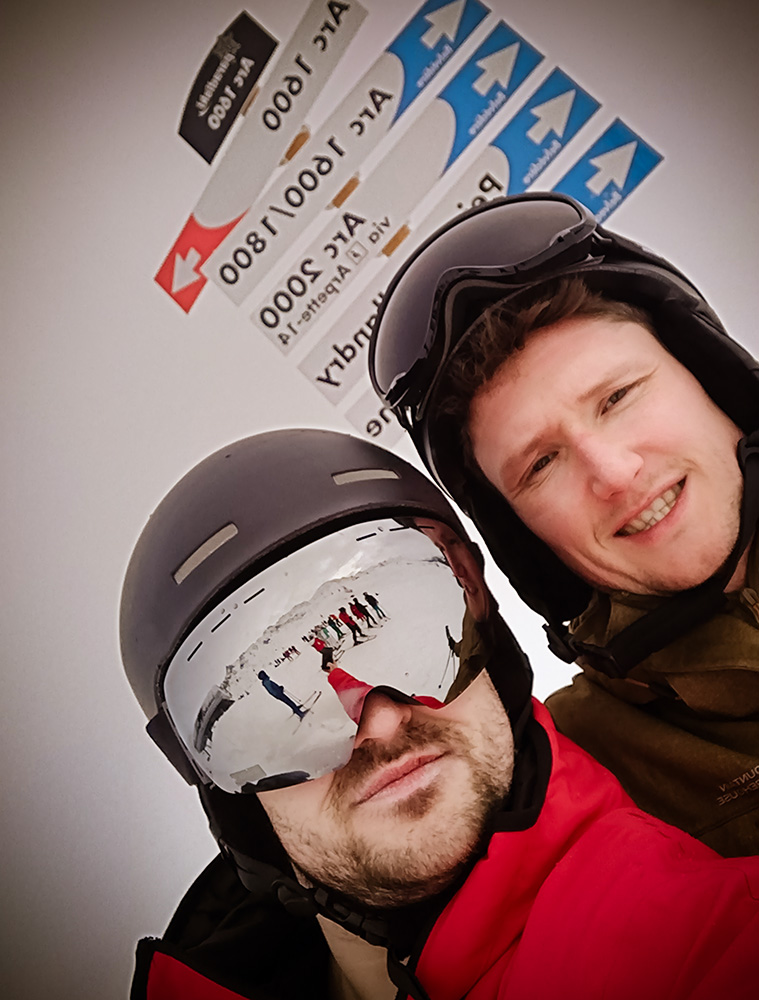
Breaking down the villages – where to base yourself
Arc 1800 – Where most beginners should start
This is where I send nervous friends. Always. The Mille8 complex has transformed what was already a solid beginner area into something special.
You’ve got two dedicated green runs with magic carpet lifts that couldn’t be gentler if they tried. Le Cube is so mellow you’ll wonder if you’re actually moving. The forest run with those wooden cabins and the xylophone is where you’ll have your first “I’m actually skiing!” moment. Being able to practice until 7:30pm under floodlights is genius – miss the morning carnage completely.
The old Jardin des Enfants area still works brilliantly too. Right at the front of the village, wide as a football pitch, with a free drag lift that’s been initiating beginners since the 70s. Once you’re ready to move on, the Villards gondola whisks you up the mountain without any nervy chairlift-dismount-drama.
Pro tip: Go to Mille8’s magic carpet at 9am when the groomers have just finished. There’s nobody about for a few peaceful minutes, and the snow is perfect corduroy.
Arc 1950 – For those who like their comfort
Don’t write off 1950 just because it’s got a slightly posher reputation. Yes, it’s swish, but the two village beginner slopes are excellent and wonderfully quiet. The magic carpet is literally outside most of the apartments, and there’s a rope tow for when you’re ready for something longer.
Being car-free and pedestrianised takes so much stress away. Everything’s within stumbling distance. The ski school groups can be smaller (if they charge more, fewer people book them), which can mean more personal attention. And you’re perfectly placed to nip over to either Mille8 or Arc 2000’s wider slopes when you’re ready to explore.
Downside? You might outgrow the village slopes pretty quickly. But by then you’ll have found your feet in a calm, beautiful environment. Sometimes that’s worth paying for.
Arc 2000 – Best snow, guaranteed
Sitting at 2,120m (yes, higher than the name suggests – don’t ask me why), Arc 2000 has the best snow in the resort. The wide bowl catches the sun but somehow keeps great snow all day. Must be the altitude.
First easy/green runs at the bottom of Reservoir piste and I think you will get onto blues quickest in Arcs 2000. Plan Vert and Edelweiss are about as gentle as blues get, and the St Jacques chair (free on Saturdays) serves slopes so wide you could land a plane on them. Having multiple ways down means choosing your comfort level rather than being funnelled into something scary.
They’ve got four free lifts scattered about, including the Eldorador and Rhodos drags that hardly anyone seems to know about. The views across to Mont Blanc on a clear day make even the most dramatic tumbles worthwhile.
Arc 1600 & Peisey-Vallandry – For your second week
These lower villages are sometimes thought less ideal for absolute beginners, but come into their own once you can link turns. I’m not sure I agree because the trees provide shelter on grotty days, and there’s something confidence-building about skiing through forests.
The Forêt run from Peisey is legendary – 7km of gentle cruising through the trees. It’s one of Europe’s longest easy runs and builds stamina like nothing else. My record is doing it six times in a day, though my legs didn’t thank me.
Arc 1600 has lovely rolling blues through the trees. The Cachettes and Vezaille chairs let you lap manageable terrain without getting bored. Fewer Brits here too, which gives it a properly French feel.
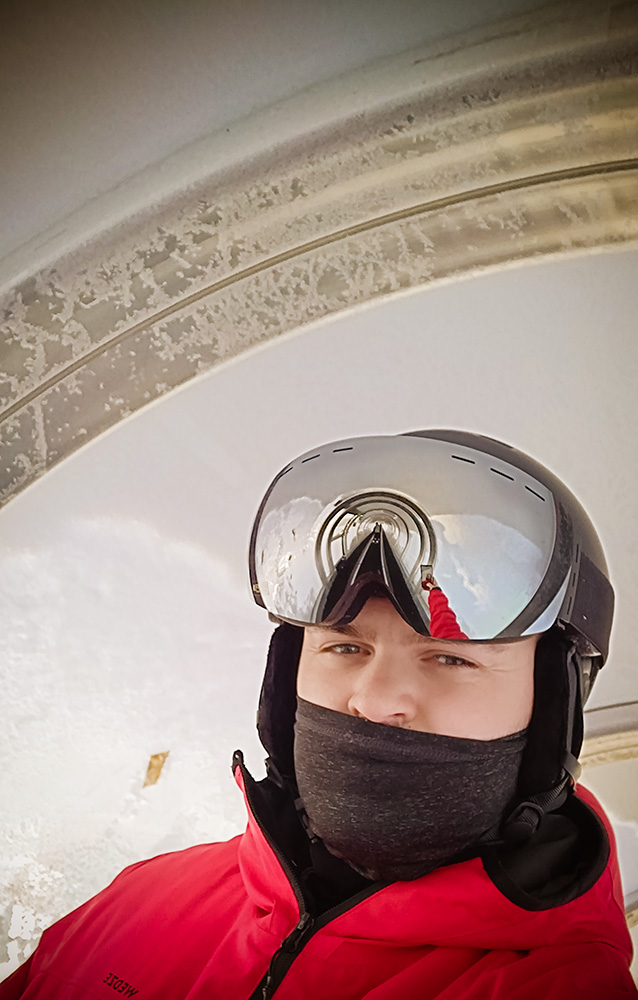
Your first week – what really happens
Days 1-3: The humbling
Day one is all about boots. Get this wrong and you’re stuffed. Too tight and you’ll be crying by lunch. Too loose and you’ll have no control whatsoever. Take your time. Walk around the shop. Do some lunges. Yes, you’ll look silly. No, it doesn’t matter.
Your first lesson starts with walking about on flat snow, which is harder than it sounds. Then some sliding. Then the inevitable first fall. The instructor will show you how to get up, which involves a lot more core strength than you’d think. By lunch, you’ll be doing “pizza” turns on a gentle slope and wondering why your thighs are on fire.
Day two is when the magic carpet really comes into play. You’ll face-plant getting off it at least once. Everyone does. By the end of the day, you’ll be linking turns and feeling somewhat in control. The free lifts mean you can practice and learn in these small areas without the cost of an all-mountain ski pass.
Day three sees most people venturing onto an easy blue slope, but instructors won’t rush you into it. It’ll feel impossibly steep at first and your pizza wedge will be enormous. But you’ll get down, and the grin will be unstoppable.
What nobody tells you:
- Your thighs will burn like never before (it gets better, promise)
- The fear of losing control is normal and passes
- All the gear feels alien at first – stick with it
- Everyone’s too focused on their own skiing to watch you fall
Days 4-6: The breakthrough
Something clicks around day four or five. You’ll start bringing your skis parallel at the end of turns. You’ll feel your edges gripping. A rhythm develops. For most people, day five or six brings that eureka moment when parallel turns just… happen.
Now you’re ready for proper runs. The tree descent to Vallandry tested my stamina and Arc 2000’s bowl gives you space to play, with other beginners more spread out. It’s so cool when you stop and realise that chairlifts have become routine rather than terrifying.
My ‘SNO Pro Tip’ is to film yourself on day one, then again on day six. The transformation is extraordinary and does wonders for confidence when you see how far you’ve come.
Week 2: Becoming a skier
I guarantee you will love Les Arcs and that means you’ll come back – week two is where it gets properly fun. Parallel turns become your default. I loved exploring different villages, each has its own character, as my confidence to travel across the ski area grew. You can get everywhere on blues and, at the end of your second week, red runs stop looking impossible. You’ll start thinking about how you’re skiing rather than just surviving.
Les Arcs’ interconnected layout shines now. Morning in Arc 2000’s sun bowl, lunch in Peisey’s trees, afternoon playing at Mille8. The variety keeps it interesting while building different skills.
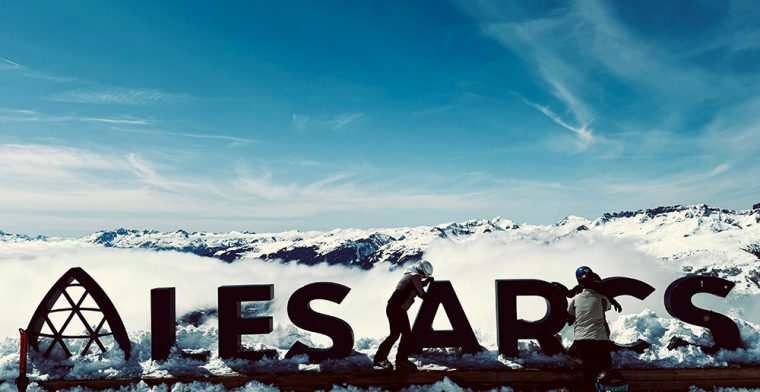
Choosing your ski school
ESF – The French classic
With 421+ instructors spread across the villages, ESF is everywhere. Their ski évolutif method (starting on tiny skis and gradually going longer) sounds mad but works brilliantly. The British instructors understand our need for clear explanations and regular encouragement rather than Gallic indifference.
Group lessons run €165-220 for five mornings. You’ll have up to 12 in a group, though 8-10 is more typical. Morning sessions work best for me – better snow, more energy, and après ski to look forward to.
Private lessons (€70-90 an hour) can transform your skiing more quickly. I always recommend a couple early on to nail the basics, then joining a group for the social side. Watching others make the same mistakes is oddly reassuring.
Kids start at three in the Piou-Piou gardens, with full day programs (€300-400 a week) including lunch and warm-up breaks. Under-fives ski free – just show their passport at the ticket office.
Evolution 2 – The British touch
With 70+ properly bilingual instructors, Evolution 2 suits nervous English speakers perfectly. Maximum group size is eight, and they’re known for patience with adult beginners. Based at Arc 1800, they’ve got really easy access to Mille8.
Yes, they can be pricier than ESF but, if you’re nervous or want extra attention, it’s money well spent. Their kids’ programs are particularly good.
Kit – what’s worth buying and what isn’t
Must-haves:
- Decent ski boots (though rental is fine initially – buy when you’re hooked)
- Proper waterproof jacket and trousers (you’ll be sitting in snow a lot)
- Good gloves – cold hands ruin everything
- Ski socks – one pair, never double up
- Base layers that actually wick
- Neck warmer (that gap between jacket and helmet gets cold)
- Helmet (confidence is everything)
Save your money and don’t buy:
- Your own skis (rental shops have ideal beginner kit)
- €300 goggles (€30 ones from Decathlon work fine)
- Technical mid-layers (any old fleece does the job)
- Anything with a luxury brand logo
Aldi and Lidl’s November ski wear is legendary among seasonaires. Complete outfits for under €100 that last surprisingly well. Decathlon is brilliant year-round. TK Maxx often has previous season’s designer stuff for pennies.
Tip: wear your base layers to the rental shop. Makes trying boots much easier. And photograph your binding settings… but do not adjust them yourself.
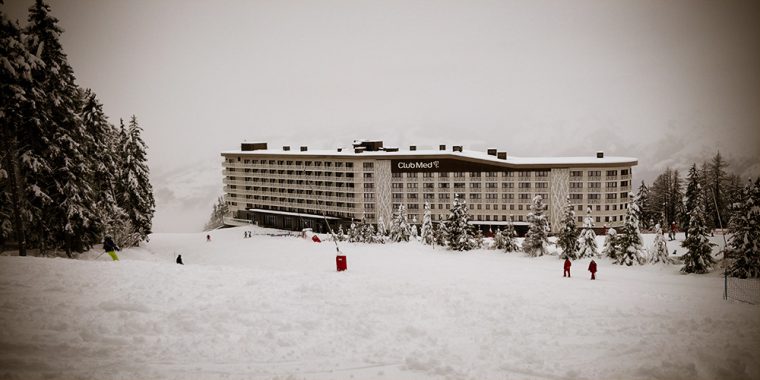
What makes Les Arcs special for beginners
Mille8 – A proper game-changer
Some were sceptical when they built Mille8, as it seemed like an expensive gimmick, but it’s genuinely revolutionary. Skiing until 7:30pm means more time for learning (when everyone else is in the bar). The xylophone makes kids (and adults) want to ski the forest run repeatedly, and the boardercross course with video recording is really motivating.
Add the swimming pools, restaurants, and soft play, and non-skiing family have plenty to do. It solves that problem of mixed groups where some are learning and others are bored.
Those free lifts
Eleven free lifts change everything. You can faff about all day without buying a pass, only committing when you’re ready for steeper slopes. They’re strategically placed (so there’s always one nearby) and brilliant for building confidence without the cost.
Les Arcs areas help natural progress
The resort layout creates perfect skill progression. From the village magic-carpets, to free lifts, to easy chairs, to the full domain. Each stage has lots of options, so I never got bored doing the same run repeatedly. It’s thoughtfully designed in a way that old-fashioned resorts can’t match.
Reliable snow
Minimum 1,600m altitude rising to 2,120m means proper snow when lower resorts are struggling. The north-facing bowl above 1950 and 2000 holds snow even in warm spells. Nothing worse than learning on ice or slush – here you get forgiving snow all season.
My secrets for faster progress
Book afternoon privates – they’re 20% cheaper and it’s warmer. Do group lessons in the morning for the social element, then a private after lunch to fix specific problems.
Video analysis transforms understanding. Most instructors offer it now. Seeing yourself ski can show you things that no amount of explanation can convey.
Each village offers different challenges, so I use the different areas for different skiing. I love Arc 1800 for the fun features, Arc 2000 for wide open space (to go a bit faster), Vallandry for (quiet/chilled) cruising through the trees. Variety builds adaptable skills faster than hammering the same run.
That boring blue you’ve mastered? Perfect for working on technique without survival stress. Do it switch. Do it on one ski. Do it looking only where you want to go. These games build skills remarkably quickly.
Dehydration at altitude kills coordination. Minimum one litre per session, more if it’s sunny. Those headaches aren’t from the altitude – you’re just parched. I always top up with a little afternoon après ski too 🙂
Celebrate everything. First parallel turn. First red run. First full day without a major stack. Your progress comes in jumps up to a little moment of nailing something slightly harder. When I recognize the small wins, it really keeps my motivation high.
Everyone’s different. I’ve seen naturals parallel on day three and others take two weeks. The timeline doesn’t matter. The journey does.
Just go for it
Les Arcs combines proper beginner infrastructure with reliable snow and thoughtful design. For me, the combination of free lifts, innovation at Mille8, and loads of mellow/beginner terrain, creates ideal learning conditions. From xylophone forests to floodlit evening sessions to tree-lined adventures – this is skiing as it should be learned. As an experience, not an endurance test.
The bottom line? If you want to go from complete beginner to confident skier efficiently while actually enjoying yourself, Les Arcs delivers. We all start somewhere. In Les Arcs, that somewhere happens to be rather special. See you in the bar after – I’ll be the one with the massive grin and slightly singed thighs.
For help choosing and booking your ski holiday in Les Arcs, browse the package ski deals or give me and the team a call 020 7770 6888.

